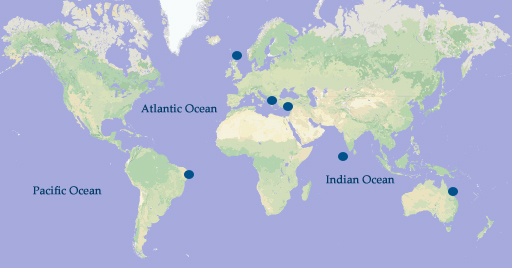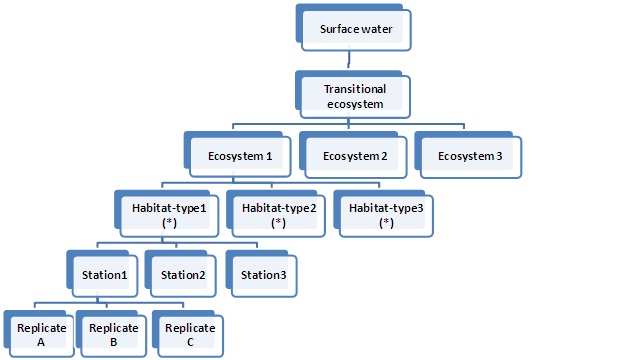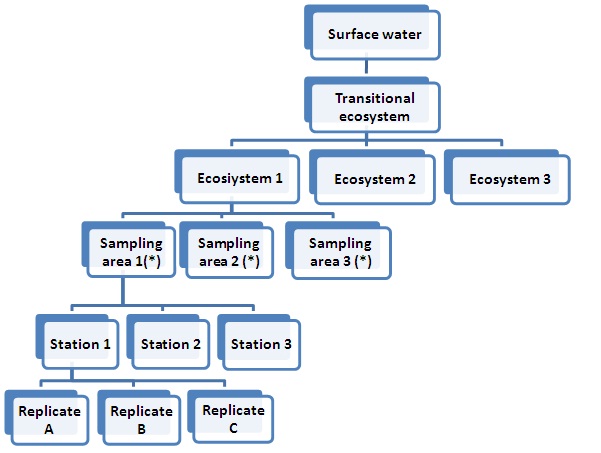Sampling Design

Map of the Sampled Areas
In accordance with the indications of the European Water Framework Directive, WFD 60/2000/EC, the classification of the ecological status of the aquatic ecosystems is based on a comparison between the conditions of each single ecosystem and the so-called “ecosystems of reference”, which have never previously been exposed to pressures as a result of human activity or have been exposed to negligible pressure.
The search for ecosystems of reference is thus a key point for the definition of any classification system. In this task, the project aims to analyze the characteristics of the phytoplankton corporations in transitional ecosystems of reference that are present in diverse Eco-Regions, in the search for common models of distribution that make it possible to define quality standards (i.e. optimal conditions) that can also be applied to the Mediterranean area and the North Atlantic, in which it is not possible to observe ecosystems of reference but for which the conditions of reference can be assumed to be similar to those of ecosystems with low human impact.
This activity will be developed by means of a series of quantitative pilot studies designed to analyze the characteristics of the size/abundance distributions among the phytoplankton corporations.
This activity aims to quantify the degree of invariance / uncertainty of structural phytoplankton properties to natural source of variability and to evaluate the accurancy of general models of variation of the size-abundance distributions linked exclusively to the climatic variability, geomorphology and hydrodynamics of the sites under study.
The objective of studies is to proceed with the methodological standardization and certification of the ecological descriptors of the state of health of aquatic ecosystems based on the analysis of the dimensional structure of the phytoplankton communities.
These studies will be carried out in lagoon ecosystems that may be considered of reference, and that is practically immune to significant human pressure, in the following Eco-Regions:
- the North Atlantic area (Scotland);
- the Mediterranean area (Greece, Turkey);
- the South Atlanctic area (Brazil);
- the Indo-Pacific area (Maldives);
- the Western Pacific area (Australia).
Sampling Scheme
The experimental activity will be conducted in transitional ecosystem for each eco-region included in the project, with at least three ecosystems and three experimental stations per ecosystem in each type. The ecosystems identified are classified in relation to their type, according to Roff and Taylor (2000). In accordance with this approach, the transitional ecosystems are classifiable into n° types, identified on the basis of the granulometry of the sediments and the presence and type of vegetation. For each ecosystem considered, a maximum of three categories of habitat are selected and in each of them a sampling point is specified.
Overall Sampling Scheme

Realized Sampling Campaign

(*) In general is possible that two different sampling areas refer to the same habitat type.
Sampling scheme. *Habitat-type classification scheme based on sediment granulometry and the presence and type of vegetation according to Roff and Taylor (2000).